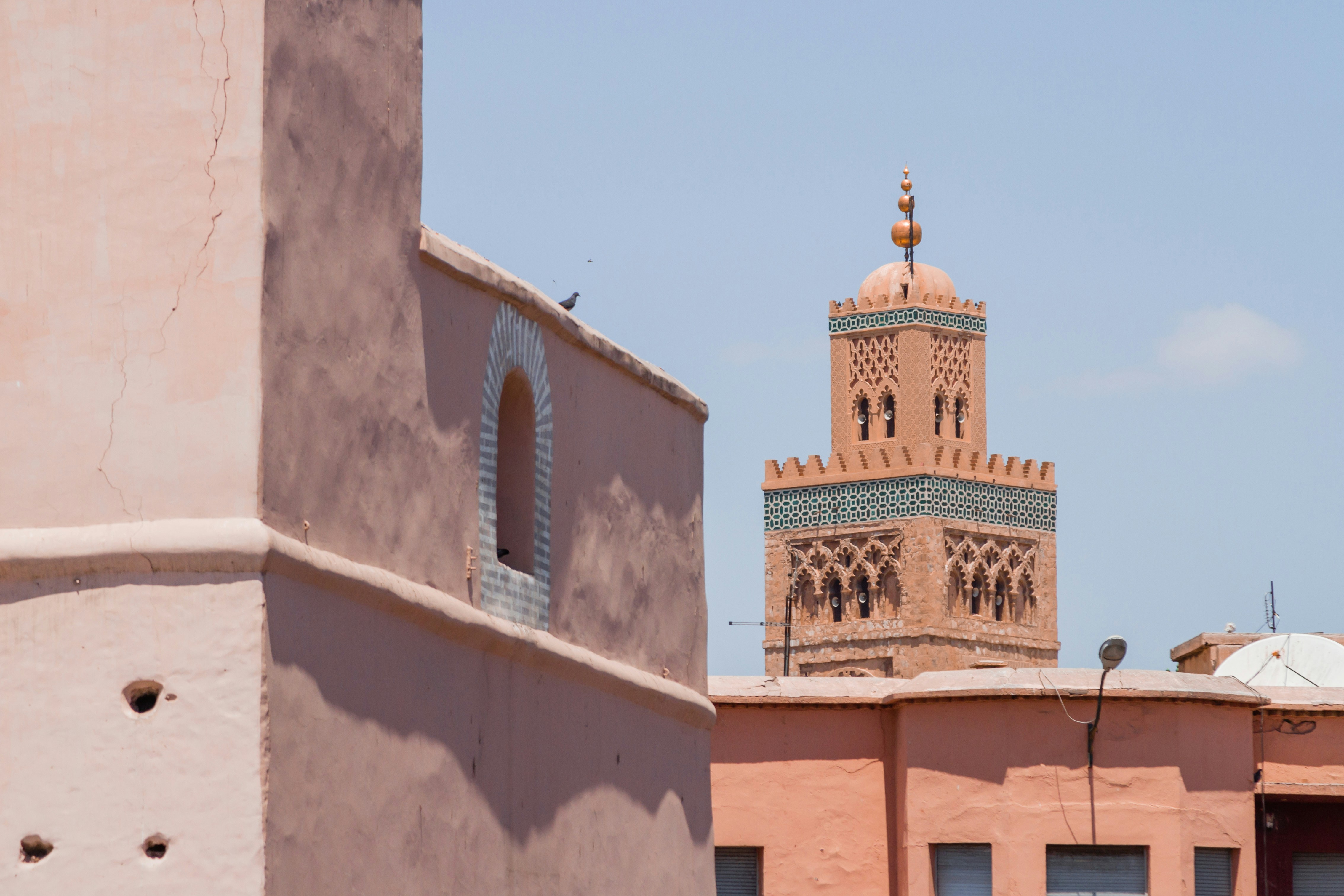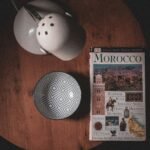Green Tourism
Green tourism, often referred to as sustainable tourism, emphasizes the importance of minimizing negative impacts on the environment while promoting cultural exchange and economic growth. This approach prioritizes practices that conserve natural resources, protect local ecosystems, and enhance the quality of life for local communities. As more travelers become aware of their ecological footprint, green tourism has emerged as a viable solution for aligning travel experiences with environmental stewardship.
The significance of green tourism can be observed through its multifaceted benefits. First, it encourages responsible travel behaviors by promoting environmentally conscious choices, such as reducing waste, conserving energy, and supporting local businesses. These practices not only help preserve the natural beauty and biodiversity of a destination but also create a more authentic and enriching experience for visitors. When travelers engage with local cultures, they contribute to the preservation of traditions while fostering mutual respect and understanding.
Additionally, green tourism plays a crucial role in environmental conservation. By prioritizing sustainable practices, such as eco-friendly accommodations and tours that highlight local ecosystems, travelers are more likely to appreciate the fragility of nature. This sense of awareness can lead to greater advocacy for environmental protection among tourists, as they witness firsthand the beauty and diversity of the locations they visit.
Morocco, particularly during notable events like the World Cup, serves as an excellent example of how green tourism can flourish. The influx of visitors creates opportunities for promoting sustainable travel initiatives that benefit both the environment and the local community. By emphasizing art, culture, and sustainability, Morocco not only showcases its rich heritage but also positions itself as a leader in integrating green tourism practices into major global events.
Morocco’s Rich Cultural Heritage
Morocco is a country that boasts a profoundly rich cultural heritage, shaped by a confluence of diverse influences over centuries. From Berber tribes to Arab settlers, and later European colonial powers, the layers of history enrich the Moroccan identity, contributing to a vibrant tapestry of traditions, languages, and artistic expressions. This historical amalgam is evident in the country’s architecture, music, and crafts, which reflect the unique environment of Morocco and its people.
Artistic expression in Morocco can be observed through various mediums, including intricate tilework, vibrant textiles, and agricultural crafts cultivated over generations. The artistry often showcases vibrant colors and complex geometrical designs that draw on the country’s natural surroundings, as well as its spiritual beliefs. Traditional Moroccan crafts, such as pottery and weaving, are not just products but also repositories of history and culture, embodying the pride and creativity of local artisans. These artistic traditions are crucial in understanding the Moroccan ethos, as they signify connection to the past while adapting to contemporary developments.
Furthermore, the landscape of Morocco—ranging from the majestic Atlas Mountains to the serene beaches of the Mediterranean—also plays a significant role in shaping its cultural heritage. This geographical diversity influences the artistic themes prevalent in Moroccan art, allowing creators to embody the essence of their environment in their works. Today, as the sector of green tourism gains momentum, there is an increasing appreciation for how the preservation of cultural heritage can intertwine with sustainable practices. The green tourism movement emphasizes the importance of respecting and celebrating local cultures, making it essential to engage with artistic expressions that tell the story of Morocco’s history and identity.
The Role of Art in Promoting Sustainability
Art serves as a powerful medium to raise awareness about sustainability and environmental issues. In Morocco, artists are increasingly employing various forms of creative expression—such as painting, sculpture, and performance—to convey messages centered around nature conservation and sustainable practices. This artistic engagement not only inspires audiences but also fosters a deeper connection between cultural heritage and environmental stewardship.
One notable example is the work of Moroccan painter Hassan Hajjaj, whose vibrant pieces celebrate local culture while simultaneously addressing pressing environmental concerns. Hajjaj utilizes recycled materials as elements in his art, drawing attention to the importance of waste reduction and the potential beauty inherent in reused items. This form of creative reclamation reflects the spirit of green tourism by reminding viewers of the value of sustainability intertwined with local artistry.
Moreover, numerous art festivals across Morocco now emphasize themes of sustainability. The Marrakech Biennale, for instance, has featured installations that highlight biodiversity and the importance of preserving Morocco’s rich natural landscapes. These artistic initiatives not only attract visitors but also engage local communities, prompting dialogue and reflection on sustainability challenges faced by both urban and rural environments.
Performative art forms, like street performances and traditional music festivals, further amplify this narrative. Artists interacting with the public often incorporate environmental messages into their work, using the platform to educate audiences about sustainable living practices. Through these dynamic encounters, attendees gain insights into the critical role they play in fostering ecological awareness.
Ultimately, art in Morocco is not merely a reflection of cultural identity; it is also a catalyst for promoting sustainability. By bridging the gap between creativity and environmental consciousness, artists are making significant contributions to the green tourism movement, fostering a more sustainable future for the region.
Impact of the World Cup on Tourism in Morocco
The 2022 FIFA World Cup in Qatar has not only captured the attention of football fans around the globe but has also positioned Morocco as an emerging destination for tourism. With its rich cultural heritage, breathtaking landscapes, and vibrant artisan communities, Morocco holds great potential to attract an influx of visitors during and after the World Cup. This surge in tourism can serve as a crucial opportunity to promote sustainable practices and initiatives within the green tourism sector.
As international visitors flock to Morocco, there is an expected uptick in awareness surrounding the country’s landscapes and traditions. The influx is likely to enhance the visibility of local artists and craftsmen, providing them with a platform to showcase their work. Such exposure can create a ripple effect in the local economy, fostering appreciation for traditional Moroccan art forms such as pottery, weaving, and painting, while aligning with eco-friendly principles. It serves as a reminder of the importance of preserving cultural heritage and natural resources in the face of rising tourism.
The impact of the World Cup on tourism extends beyond mere visitor numbers. It presents an unprecedented opportunity for collaboration among government, tourism boards, and local businesses to champion eco-friendly initiatives. Strategies might include promoting carbon-neutral travel options, supporting local artisan markets, and creating awareness campaigns about sustainable practices in tourism that highlight the importance of green tourism. By doing so, Morocco can not only address the immediate influx of tourists but also ensure that the benefits of increased visibility lead to long-term environmental and economic advantages.
In conclusion, the World Cup poses a unique opportunity for Morocco to harness its tourism potential while promoting green tourism practices. By focusing on sustainability and preserving its rich cultural identity, Morocco can set a template for balanced growth, ensuring that the environment and local communities benefit from the anticipated tourism boom.
Eco-Friendly Art Initiatives During the World Cup
The intersection of art and green tourism in Morocco during the World Cup presents a unique opportunity to promote sustainable practices among both tourists and locals. Various eco-friendly art initiatives are planned to coincide with this grand event, effectively harnessing artistic expression to raise awareness about environmental issues. These initiatives aim not only to capture the spirit of the Games but also to inspire attendees to adopt eco-conscious behaviors.
One notable event is the exhibition titled “Sustainable Visions,” which will showcase artworks made entirely from recycled materials. This initiative invites local artists to transform waste into thought-provoking pieces, thus encouraging spectators to reflect on the intricacies of sustainability. By utilizing materials that would otherwise contribute to landfills, artists emphasize the importance of recycling and upcycling, pivotal components of any discussion on green tourism.
In addition to exhibitions, the World Cup will feature interactive workshops aimed at engaging the community in eco-friendly practices. These workshops will allow participants to create their own sustainable art projects, using found objects and materials that challenge traditional artistic norms. By stimulating public interest in eco-conscious creativity, these workshops serve as a foundation for ongoing environmental dialogue within the community.
Moreover, outdoor performances and installations in public spaces will complement the visual art initiatives, weaving sustainability themes into cultural expressions. Local musicians and performers will incorporate messages about green tourism into their acts, effectively utilizing performance art to inspire change. This multi-faceted approach is designed not only to captivate the audience but also to spur action toward adopting sustainable practices.
Through these eco-friendly art initiatives, Morocco is poised to illustrate how cultural engagement can foster a collective commitment to environmental sustainability, thereby setting a precedent for future events and highlighting the potential of art in promoting green tourism.
Promoting Local Artists and Businesses
The intersection of green tourism and local artistry has been significantly highlighted during major events such as the World Cup. In Morocco, this unique convergence offers an opportunity for local artists and businesses to flourish while promoting sustainable tourism practices. By integrating cultural experiences with environmental consciousness, the event serves as a catalyst for the promotion of local talent and creativity.
Tourism agencies have developed strategic collaborations with local creatives, showcasing their work at various venues throughout the event. These partnerships not only provide a platform for local artists but also draw attention to handmade goods, traditional crafts, and eco-friendly products. For instance, local artisans are offered the chance to exhibit their crafts in pop-up shops, allowing international visitors to engage with Moroccan culture while supporting local economies.
Additionally, the World Cup has spurred initiatives that prioritize sustainability in marketing campaigns, focusing on promoting responsible travel and the importance of supporting local communities. By choosing to highlight authentic cultural narratives and local artists, tourism agencies create an inclusive atmosphere that nurtures both creativity and economic growth. For example, art workshops led by local artists offer visitors a chance to learn traditional techniques, fostering an appreciation for Moroccan arts while ensuring the artisans receive fair compensation for their work.
Moreover, local businesses that align with eco-friendly practices, such as using sustainable materials and reducing waste, benefit from the influx of tourists. This creates a ripple effect, encouraging more entrepreneurs to adopt green practices that contribute to preserving Morocco’s rich cultural heritage while enhancing the overall tourism experience. The emphasis on local arts complements the World Cup’s broader sustainability goals, reinforcing the idea that tourism can be a driver for economic empowerment, environmental responsibility, and cultural appreciation.
Visitor Experiences: Engaging with Green Art Tourism
Morocco, a country rich in cultural heritage and artistic expression, offers a unique opportunity for visitors to engage in green art tourism, especially during the World Cup. This sustainable form of tourism emphasizes not only the appreciation of art but also the importance of environmental consciousness and community collaboration. Tourists can immerse themselves in the local culture through various engaging experiences that highlight Morocco’s commitment to sustainability.
One of the most popular experiences is participating in guided art tours that focus on environmentally friendly practices. These tours often include visits to local galleries showcasing works by artists who incorporate recycled materials and eco-friendly processes in their creations. Visitors gain insights into the artists’ motivations, as well as the broader implications of their work on the environment. Such tours encourage a deeper understanding of how art can serve as a catalyst for social change and environmental awareness.
Furthermore, eco-art workshops are an excellent avenue for tourists to engage hands-on with green art practices. These workshops, often led by local artisans, provide the opportunity to create artworks using sustainable materials. Participants learn techniques such as upcycling and find inspiration from traditional Moroccan crafts, which often emphasize harmony with nature. This immersive experience not only fosters creativity but also instills a sense of responsibility toward the environment among participating visitors.
Community projects designed around green art tourism also play a vital role in enriching visitor experiences. Tourists can join initiatives that support local artists and artisans while actively participating in environmental conservation efforts. These projects may include mural painting, community gardens, or art installations that draw attention to ecological issues. Such activities foster meaningful connections between visitors and the local community, highlighting Morocco’s rich cultural diversity and its commitment to sustainable practices.
By engaging in these unique experiences, visitors to Morocco during the World Cup not only create lasting memories but also contribute to a deeper appreciation of the crucial intersection between art and environmental stewardship.
Challenges and Opportunities in Green Tourism
As Morocco prepares to host the World Cup, the nation stands at a pivotal intersection of opportunity and challenge regarding green tourism. One significant challenge lies in the existing infrastructure, which may not fully accommodate the influx of visitors seeking sustainable experiences. While Morocco boasts stunning landscapes and rich cultural heritage, the adequacy of public transport, waste management, and eco-friendly accommodations remains a concern. The development of sustainable infrastructure is essential to ensure that tourism activities do not adversely impact the environment and resonate with eco-conscious travelers.
Regulatory concerns pose another challenge, as policies facilitating green tourism may not be sufficiently robust or harmonized across different levels of government. A cohesive regulatory framework is vital to promote environmentally friendly practices in the tourism sector. Additionally, local communities may need guidance and support to engage in sustainable tourism initiatives effectively. This can be achieved through training programs aimed at integrating eco-friendly practices within traditional tourism operations.
On the other hand, these challenges present numerous opportunities for Morocco to innovate and lead in the realm of green tourism. Addressing the infrastructural deficits provides a clear pathway for investment and collaboration with private entities specializing in sustainable practices. Furthermore, fostering partnerships between the government, local communities, and NGOs can catalyze initiatives that prioritize both sustainability and cultural authenticity. Promoting responsible tourism can enhance visitors’ engagement while ensuring that natural resources are preserved for future generations.
Finding a balance between mass tourism and sustainability will require strategic planning, public awareness campaigns, and strong partnerships. By leveraging the opportunities arising from these challenges, Morocco can not only elevate its tourism offerings during the World Cup but also lay the groundwork for long-term sustainability in its tourism industry.
Conclusion: The Future of Green Tourism and Art in Morocco
In recent years, green tourism has emerged as a pivotal concept, especially in regions rich in culture and natural beauty like Morocco. The integration of art within green tourism efforts during significant events, such as the World Cup, presents a unique opportunity to enhance the visitor experience while promoting sustainability. By aligning artistic endeavors with eco-friendly practices, Morocco can showcase its vibrant culture while minimizing environmental impact.
The importance of embracing green tourism through art becomes particularly evident during high-profile events. These occasions attract numerous visitors, offering local communities a chance to engage with tourists and promote their artistic heritage. Craftsmen and artists can showcase their work, drawing on traditional Moroccan styles while incorporating themes of sustainability. This not only uplifts local economies but also fosters appreciation for the responsible stewardship of natural resources.
Furthermore, the long-term benefits of this approach extend beyond immediate economic gains. By focusing on sustainable practices and the arts, Morocco can cultivate a positive global image, attracting environmentally conscious travelers and enthusiasts of cultural experiences. This shift not only supports the preservation of local ecosystems but also enhances the resilience of communities by providing them with avenues for financial sustainability and cultural expression.
Therefore, the fusion of green tourism and art represents a promising pathway for Morocco’s sustainable future. As the nation continues to embrace this paradigm, it can serve as an inspiring model for other countries looking to balance tourism with environmental responsibility. The journey towards sustainable travel highlights the enduring power of culture and creativity as catalysts for positive change, reinforcing the notion that the enjoyment of travel does not have to come at the expense of our planet.






